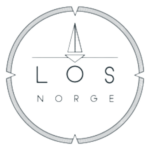START WITH WHY – AND PEOPLE WILL FOLLOW
feb 5, 2021
Written by: Jesper Sode Hansen
There is an ongoing discussion about the reason for Toyota’s success where others have failed. Maybe
the underlying reason can be found within the human brain and orientation of Toyota!
There has been and still are vivid discussions whether the method or “modus operandi” we use to introduce, transform, implement or work with Lean in organizations and businesses play a role in the success rate of Lean. Some will argue that the lack of success for lean transformation in other businesses boils down to: lack of leadership engagement, whether it’s tools, strategies, philosophy etc.
Experience show that 9 out of 10 Lean transformations fail (Molin et al., 2013). Many organizations experiences the Lean efforts last for a while. Once the “wedding and honeymoon” is over – the Lean efforts shrivels and disappear into oblivion together with all the other failed business strategy efforts. Maybe one can find the key to Toyotas success in the way humans adapt to new ideas!
Law of Diffusion
Everett M. Rogers developed the Law of Diffusion in 1962, describing how innovation spreads in society. The law states that the way people adapts and follow new ideas are broken into five segments: Innovators, Early adaptors, Early majority, Late majority and Laggards. The Innovators are the first segment. They adopt new ideas and innovation early. They mainly go on a “gut” feeling and the distance between thoughts and action are short. An example of these can be the people that slept outside the Apple stores when IPhone was first released (reported by Simon Sinek). The next segment are the Early adopters – They might not be first, but they are easily influenced by the innovators. The late adopters joins the movement after the Innovators and Early adopters have tested and vouch for the idea or product. The Late majority are more prone to make decisions on rational arguments than the Early adaptors and they are not as loyal as the Innovators and Early adaptors. The reason for this can be explained by how the brain is wired.
Functions of the Brain – The Limbic system
The Brain consists of several systems. Among these are Neocortex and the Limbic system. Neocortex is situated in the big part of the brain, the cerebral cortex. The Neocortex is involved in the higher functions of the brain such as reasoning, rational and analytical thoughts. The Neocortex also holds the language center. This is why we are capable to do analytical reasoning and make rational arguments. The Limbic system is situated in a more central part of the brain. The Limbic system supports functions like: emotions, behavior, loyalty and long-term memory. It also controls our decisions and actions. Making it possible to act on our emotions and to create emotional bonds.
Connection between the brain and Law of diffusion
The innovators and the Early adaptors base their decisions upon a gut feeling as mentioned earlier. They share a Trust and are extremely loyal the solution or idea – supported by processes in the Limbic system. They do not act on rational arguments or logic, but upon a mission to follow or an gut feeling, making them first movers. By testing out and validating the idea or solution they make way for the majorities. Starting off with the Early majority and dragging along the Late majority with logical reasoning. To begin this movement one cannot start with rational or analytical reasoning. One needs to start with communicating the mission or purpose. One have to start with the WHY!
Start with WHY before HOW and WHAT
Many business and organizations has a tendency to start the Lean initiative with HOW and WHAT. They use logical arguments to sell in the initiative as: cost reduction, better flow, more competitive etc. But maybe this is the wrong communication or change strategy! Maybe they should start in the other end of the scale like Toyota have! Toyota has a clear vision and purpose! The vision does not start with creating most value to the shareholders or becoming the world’s biggest car manufacturer.
Toyota has a clear vision to lead the way to the future of mobility, creating better life quality and safer transportation of people. Through focusing on quality, innovation and respect for the planet. Inspiring the talented and passionated people of Toyota to create a better tomorrow. Toyota has a clear WHY! Everything they do, points in direction of the WHY. Making them credible! Their WHY appeals to the Innovators and Early adaptors. Pulling along the Majorities. Toyota has manage to create a movement or culture for learning and developing quality in their organization. And they stay true to their mission no matter the market conditions. They are loyal to their mission and their employees are loyal to them!
We can learn from Toyota that a clear vision, in combination with respect for the people and systems for learning is key to success! So before you start of the Lean initiative with strategies, tools or philosophy. Start with creating a clear WHY. A Purpose for your organization. Like Isao Yoshino describes in the book Learning to Lead, Leading to Learn – Set the direction (Anderson, 2020)
The direction has to be credible and directly connected to the basis of existence for the organization. You have to appeal to the Limbic system thru Emotions. So that you engage the left side of the diffusion curve. Making them the first movers to inspire the right side of the curve. By this making a movement towards Lean. Hence building a Learning organization.
Start with WHY – and People will follow!
